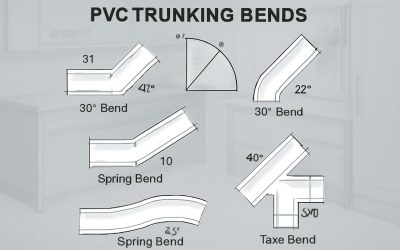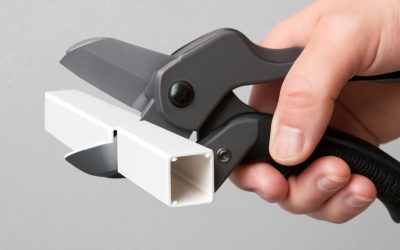
Cable trunking is a popular type of enclosure that is used to store, protect, and route cables and wires. It is a type of cable tidy and is commonly installed on plasterboard walls, concrete, wood, or other surfaces. Generally, trunking has a hinged side and a removable lid. This allows easy access and rewiring.
Various types of electrical trunking systems are available for different applications. Some of them include self-adhesive trunking, conduit, and wire wraps. The type of containment system that you decide on will be influenced by your building and wiring system, your budget, and your preferences. A cable electrical trunking system keeps the wiring organized, protecting it from dust and humidity. Using this system also prevents the damage of cable insulation.
PVC trunking is the most common form of containment. It is a popular choice because it is inexpensive and durable. Additionally, the material is resistant to rodents and other pests. Another advantage is that it is flame retardant and self-extinguishing. These characteristics make PVC an ideal solution for electrical installations.
Typical features of cable trunking include a wide trunking and a hinged lid. This enables the enclosure to be assembled into a complete electrical installation. Depending on your specifications, cable trunking may be made from PVC, aluminum, copper, or fiberglass. Other materials, such as plastic, can be used in trunking systems.
One of the main benefits of using cable trunking is its ability to accommodate additions and changes. When installing cables, it is important to ensure that the cables do not obstruct the work area. Many homeowners are not aware of the advantages of using this system. Trunking can eliminate the need for open-walls, which means there will be less mess and tripping hazards.
PVC is a durable material that can withstand a variety of chemicals and soils. It is also arc-proof and rat-proof. You can find PVC cable trunking in a range of colors. Specifically, you can purchase trunking in gray (RAL 7030) or white (RAL9001).
Conduit is another common form of cable containment. It is similar to trunking but has the advantage of being more aesthetically appealing. Instead of being installed on the surface, it can be mounted on baseboards, cabinets, or other architectural features. In addition, it can be submerged in water, which means it is more suitable for outdoor installations.
If you want to install PVC cable trunking, you can find some of the best options on the market. These include the RS PRO range of accessories from Schneider Electric. These accessories are designed to fit 110 x 70 mm and 2 m cable trunking. They are made from PVC material and are available in white and RAL 9010.
Dexson from Schneider Electric offers a variety of PVC cable raceway products. These products are designed to be easy to use, ensuring that the installation process is streamlined and quick. They also come in a variety of sizes and configurations. Lastly, you can choose from a variety of finishes and colors to suit your home’s decor.



0 Comments